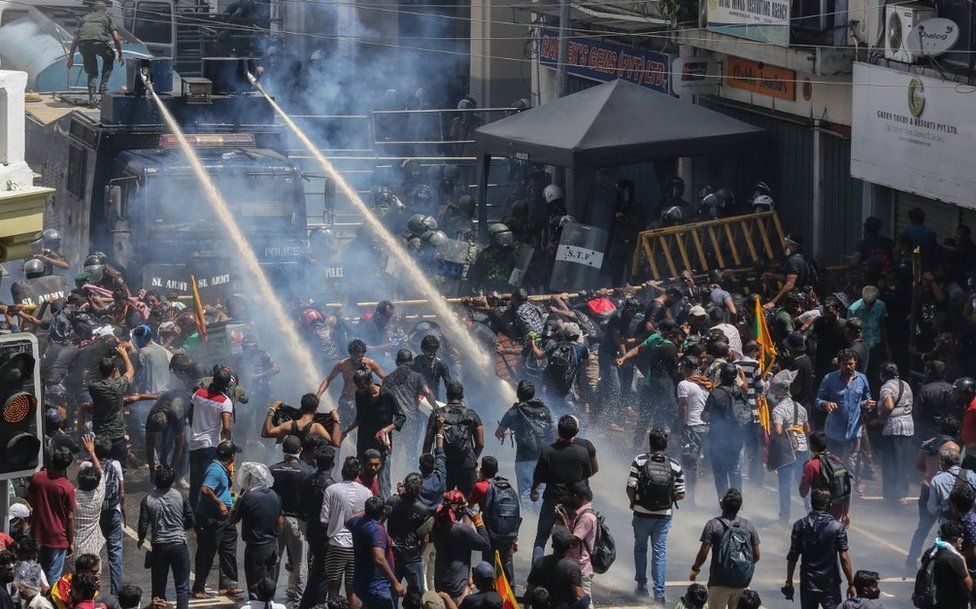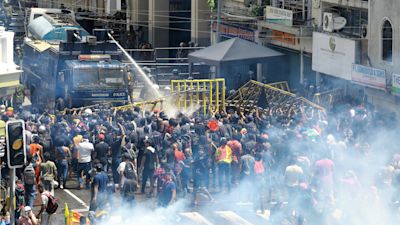
Turkish medical workers on nationwide strike after murder of doctor, assistant
Jul 07 2022
The country’s top medical organization, the Turkish Medical Association (TTB) has called for the strike to protest against soaring cases of violence targeting the country’s medical workers, while calling for the resignation of the Minister for Health Fahrettin Koca, BBC said.
Cardiologist Ekrem Karakaya and his secretary were killed on Wednesday at Konya City Hospital by the relative of a patient, who was reportedly frustrated with the specialist physician’s treatment of a family member, BCC Turkish reported. The assailant, Hacı Mahmut Akcay, took his own life following the incident, it said.
The killings are the latest in a string of attacks against the country’s healthcare employees, who for months have also protested what they are calling inadequate pay and unmanageable working conditions.
“In the face of violence, we can no longer tolerate any damage to … physicians/health workers,’’ the TTB said in a statement issued on Thursday. “As we have repeatedly stated, violence is a predictable and preventable social problem, and this problem can be overcome with overarching policies aimed at solving it.”
Turkey’s healthcare workers were subject to 190 acts of violence targeting 361 healthcare workers in 2021, according to a report by the Union of Health Care and Social Service Workers (Sağlık-Sen). The figure marks a 62 percent uptick compared to the previous year.
Meanwhile, Turkey’s media watchdog, the Radio and Television Supreme Council (RTÜK) banned all media coverage of the double homicide, SoL news site reported on Wednesday.

Jul 08 2022
The leader of Turkey’s far-right Nationalist Movement Party (MHP) on Friday condemned a protest led by the country’s top medical association for safer working conditions, prompted by the murder of a doctor and his secretary.
The junior coalition partner of President Recep Tayyip Erdoğan said that the two-day nationwide healthcare workers protest led by the Turkish Medical Association (TTB) was “unlawful” while accusing of TTB of “intentional provocation” of the sectors workers, Evrensel newspaper reported.
Turkey’s healthcare workers on Thursday began a strike following the murder of a doctor and his secretary by a patient’s relative in central Konya province. The TTB called for the strike to protest against soaring cases of violence targeting the country’s medical workers, while calling for the resignation of the Minister for Health Fahrettin Koca.
Wednesday’s double murder at Konya City Hospital is the latest in a string of attacks against the country’s healthcare employees, who for months have also protested what they are calling inadequate pay and unmanageable working conditions.
“I find it very wrong that our physicians have gone on a protest for two days, (prompted) by the intentional provocation of the Turkish Medical Association, which was become a vehicle for separatism,” the MHP leader said, adding that the subsequent cancellations of physician appointments across the country were both “wrong” and “unlawful.”
Turkey’s healthcare workers were subject to 190 acts of violence targeting 361 healthcare workers in 2021, according to a report by the Union of Health Care and Social Service Workers (Sağlık-Sen), a 62 percent increase compared to 2020.
The Erdoğan ally in recent years targeted the TTB, over the organisation's criticism of Ankara’s healthcare policies during the COVID-19 pandemic. Earlier this year, the MHP leader called for TTB officials to leave Turkey, after the organization voiced concerns about working conditions for the country’s medical workers.

Turkish imam to face investigation for calling for violence against doctors
Jul 09 2022
Turkey’s Religious Affairs Directorate (Diyanet) has launched an investigation on an imam in the central Anatolian Konya province for calling for violence against doctors upon a healthcare strike earlier in the week.
“Doctors say they are on strike today. Would you not kill him? Would you not beat him up?” the imam said during the Friday sermon, in the wake of a cardiologist being shot to death on duty.
The imam in question made “inappropriate comments” while on duty, the Diyanet said in a statement, condemning him.
An inspector has already been sent to Konya to carry out the investigation, the religious body said.
The Turkish Medical Association (TTB) said the imam’s comments were “incitement to violence, murder, even massacres”, calling on the Diyanet and courts to take action.
Doctors and healthcare staff in the country went on a two-day strike ahead of the Eid al-Adha holidays to protest their worsening working conditions and violence they face, especially in emergency rooms.
Cardiologist Ekrem Karakaya was killed in a hospital in Konya on Wednesday by a man who blamed him for the death of his sick relative. The killer later took his own life.
In 2021 there were 190 acts of violence against healthcare workers, targeting 361 members of the medical community in a 62 percent rise in recorded incidents compared to the previous year.


















